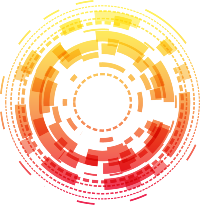Recently, Southeast Asian nations like Vietnam are making bold moves to regulate cryptocurrencies, signaling a significant shift in global financial power. This region’s swift embrace of regulation, rather than outright bans, highlights a pragmatic approach aimed at harnessing blockchain innovation while maintaining control. Countries like Vietnam are positioning themselves as responsible stewards, selectively attracting crypto
NFT
In recent months, Southeast Asia has seen a surge in government actions targeting cryptocurrencies, with Vietnam stepping prominently into the spotlight. While these moves might seem restrictive at first glance, they could herald a more mature phase of digital asset adoption. Governments across the region are beginning to see the potential benefits of crypto, but
In the frenetic landscape of digital currencies, airdrops have emerged as a powerful tool not merely for distribution but for strategic market manipulation. Companies like Boundless (ZKC) orchestrate these free-token giveaways to cultivate loyalty, inflate perceived value, and shape investor behavior. For seasoned traders observing the recent Binance HODLer airdrop announcement, it’s clear that these
In an era where technology increasingly infiltrates every aspect of our lives, football clubs have begun to recognize the immense potential of digital engagement. The recent partnership between Borussia Dortmund and FIFA Rivals exemplifies this shift. While it promises innovative fan experiences, it also reveals underlying tensions about commercialization and authenticity. This collaboration isn’t merely
Despite widespread skepticism, recent developments in the NFT space suggest a resilience that cannot be dismissed as mere coincidence. Tengr.ai’s rapid sell-out of its Genesis Collection on the Galaxis platform underscores an important truth: the industry is not only alive but recalibrating itself around quality, innovation, and user-centric principles. In a market often plagued by
In a landscape saturated with fleeting NFT projects and hollow promises, Finalbosu boldly positions itself as a transformative force within the digital collectibles space. However, beneath its vibrant anime aesthetic and community-driven narrative lies a complex and somewhat risky endeavor. It’s a project that seeks to marry the emotional resonance of personal growth with the
By mid-2025, the once-boisterous frenzy surrounding NFTs has settled into a more pragmatic and robust landscape. No longer driven solely by speculative mania or profile picture collections, today’s NFTs emphasize tangible utility and meaningful integration with both digital and physical worlds. This shift signals a maturing industry willing to prioritize real value over fleeting hype.
In an era where artificial intelligence is often dismissed as a threat to human ingenuity, DreamNet emerges as a provocative counterpoint—challenging the conventional narrative that automation diminishes originality. This ambitious project, backed by the creators of the renowned Doodles NFT collection, seeks to redefine the future of storytelling and digital content creation. Unlike the widespread
In recent years, the Bored Ape Yacht Club (BAYC) exemplified the intoxicating allure of blockchain hype and the promise of digital exclusivity. During 2021 and 2022, owning a Bored Ape was more than just a JPEG; it became a symbol of status, a new form of social capital that transcended traditional realms. Celebrities, influencers, and
In early 2025, the landscape of battle royale gaming was shaken by the arrival of Off The Grid, a title that promised to revolutionize the genre with its cyberpunk aesthetic, inventive gameplay features, and integration of blockchain technology. While its creative ambitions are undeniable—featuring a dystopian universe crafted under Neill Blomkamp’s visionary direction—its execution leaves
